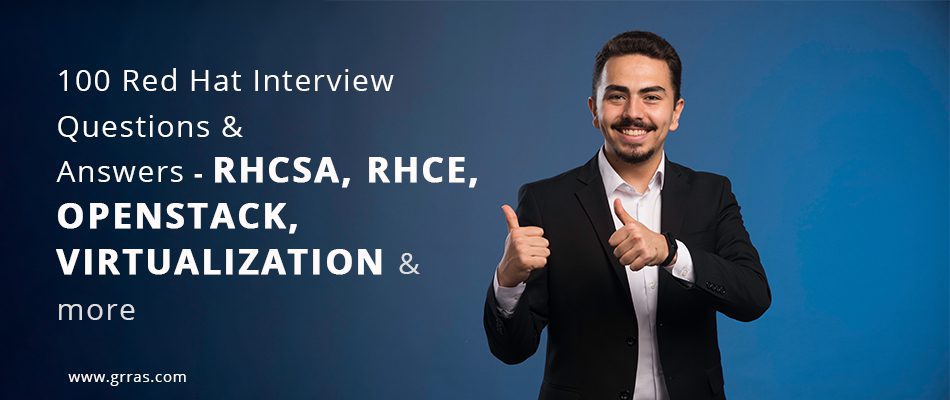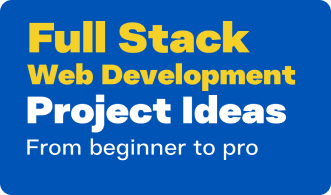Organizations today are adopting newer trends at a much faster rate than they did back in the days. A lot of reasons have come a play a role in this changing behaviour and adaption rate and one of the biggest contributors is availability to better tools which guarantee faster and longer success.
DevOps has become an appealing name and so has its tools, with OpenShift being a leading one. Those with the possession of right skills and knowledge in terms of OpenShift have become a focal point for employers and hirers and you can make the most of it by getting ahead of your competition by reading our blog with the top redhat interview questions and answers you should know about. One can make a successfull career with Redhat Certifications and training by learning all emerging technologies in linux.
With the right interview skills, many job opportunities will open up for you. You need to have a perfect blend of hard skills and well as soft skills to be able to find the right job for you and that can only make happen when you get trained from an institute which focuses equally on both. Gone are the days when a company only required you to be an expert at the job. Today, you need to have a more rounded personality and that should reflect in your interview round as well.
Thus, as you read this blog and polish your knowledge, do not forget to also exude confidence and determination to become a top name.
Let’s begin with the top 100 Red Hat interview questions and answers you should know about to start your success journey!
Red Hat interview questions and answers
Question 1. Explain OpenShift in simple terms.
Answer. A widely renowned enterprise Kubernetes platform, Red Hat OpenShift offers a cloud-like experience upon installation. Irrespective of where you build, deploy or run an app (at the edge, in the cloud or on-premises), OpenShift helps you in enjoying a uniform experience.
Its capabilities as a CaaS (Container as a Service) and as PaaS (Platform as a Service) are beyond plausible and hence, it is considered one of the most popular DevOps technologies of the present times.
Question 2. Why should businesses use OpenShift?
Answer. Businesses are moving towards what makes their business runs better and smoother and thus, they prefer to go with OpenShift because it provides a standard platform wherein business units get the chance to host their apps on cloud and that too without having to fret about the nature of the operating system. Hence, making it super simple for building, using and deploying cloud-based apps. Managed and maintained network resources and hardware is provided by OpenShift for all kinds of testing and development.
Question 3. What is Linux?
Answer. Base on Unix, it is an open-source OS which was first introduced by Linus Torvalds. Its central motive is to offer free as well as low costing operating systems to users who were unable to afford the bigger, more expensive ones like Unix, iOS or Windows.
Question 4. Give us some of the top features of OpenShift.
Answer. The list containing the features of OpenShift is quite long but here are some of the top OpenShift features –
- It offers a rich command- line toolset
- Offers an extensible cartridge system
- Extends support for multiple languages and databases
- Supports one- click deployment
- Rest API support
- Multi- environment support
- Automatic application scaling
- Responsive web console
- IDE integration
- Remote application debugging
- In- built database services
Question 5. What is OpenStack?
Answer. OpenStack is a highly popular cloud computing system known to manage a huge volume of networking, compute and storage resources in a data centre along with the aid of APIs that share a common authentication method.
It is open-source in nature and thus, is freely available to be used by both private and public clouds wherein virtual servers and networking resources are made available to the users.
Question 6. What do you know about OpenShift Origin?
Answer. OpenShift Origin is a widely known upstream community project which is used in OpenShift container Platform, OpenShift Dedicated and OpenShift Online. It is built around a base of Kubernetes container cluster management and Docker container packaging and is amplified by DevOps tooling as well as application lifecycle management functionality.
Question 7. Explain what is virtualization.
Answer. The process of creating a virtual version of a server, any network resources, an operating system or a storage device is known as virtualization.
Question 8. Explain OpenShift Dedicated in brief.
Answer. Built around the base of application containers that are powered by Docker and management and orchestration supported by Kubernetes, OpenShift Dedicated is a managed private cluster offering. It is built on the foundation of Red Hat Enterprise Linux (RHEL).
Also, it is available on Google Cloud Platform (GCP) and Amazon Web Services (AWS) marketplaces.
Question 9. What is Linux Kernel?
Answer. The low- level system software is referred to as Linux kernel and is used for the management of resources as well as to offer an interface for user interaction.
Question 10. What do you understand by OpenShift Container?
Answer. Previously known as OpenShift Enterprise, OpenShift Container Platform is Red Hat’s widely popular on- premises private PaaS (Platform as a Service). It is built on a foundation of RHEL (Red Hat Enterprise Linux), is build on the base of application containers that are powered by Docker and along with management and orchestration that are provided by Kubernetes.
Question 11. Give some benefits of Virtualization.
Answer. There are quite a few benefits of Virtualization and some of them are –
- It lessens the quantity of physical servers
- It holds the ability to bring up newer servers rapidly
- It reduces the need of infrastructure for your data centre
- Offers hardware independence of virtual servers
- Helps reduce administrative overhead
Question 12. Explain OpenShift Online.
Answer. OpenShift Online is public cloud application hosting and development service. Offered by the OpenShift community, its use enables a person to rapidly and swiftly deploy, scale and build containerized applications on the public cloud.
It facilitates scaling, automated provisioning and management of application that aids the developer in focusing more on writing application logic.
Question 13. Discuss the three central components of OpenStack.
Answer. The architecture of OpenStack is in such a way that it possesses three components namely –
- The Image Service – This service helps in registering and discovering the virtual disk images
- Computing – This service helps in the management of a huge network over the internet
- Storing Objects – Block and storage are two types of storage, both of which are supported by OpenStack
Question 14. Explain a Hypervisor.
Answer. Also known as the Virtual Machine, a Hypervisor has all the access to the physical host hardware. Hypervisor is the smallest part in terms of the disk space taken for a virtualization platform.
Question 15. Is it legal to edit a Linux Kernel?
Answer. Since Linux Kernel is released under the General Public License, it is legal to edit it.
Question 16. Explain what is an ESX Server.
Answer. ESX Server is VMware’s enterprise server virtualization platform.
Question 17. How many versions does ESX Server comes in?
Answer. It has two version namely ESXi Server and ESX Server.
Question 18. Give any 2 benefits of using OpenStack.
Answer. There are multiple benefits of using OpenStack and some of them are –
- Running a software program on OpenStack comes at a very low fee as compared to other platforms such as VMware
- The storage (both objective and block) provided by OpenStack is easy to handle
Question 19. For RHEL6, which is the default virtualization technology?
Answer. The default virtualization technology for RHEL6 is KVM.
Question 20. What is LILO?
Answer. Short for Linux Loader, it is a Linux Boot Loader that helps in loading Linux OS into the main memory for the purpose of execution. It allows rapid booting of Linux OS.
Question 21. Explain Hyper-v.
Answer. Hyper-v is a hypervisor-based Windows Server Virtualization platform that aids in the consolidation of workloads onto a single physical server by employing a wide range of services such as third-party applications.
Question 22. Name the two types of block storage ads that are provided by OpenStack.
Answer. The two types of block storage ads provided by OpenStack are-
- Ephemeral Storage – It is an instance of single storage instance.
- Volume Storage – It refers to the independent ones and are persistent in nature.
Question 23. During the installation of RHEL, what is the default mode of SELinux?
Answer. During installation from RHEL6, the default mode is Enforcing.
Question 24. The OpenShift environment runs on which systems?
Answer. The OpenShift environment running on AWS consists of one infrastructure node and one master node.
Question 25. Name the basic components of Linux.
Answer. The basic components of Linux are –
- Kernel
- Shell
- GUI (graphical User Interface)
- System utilities
- Application programs
Question 26. What is a virtual machine?
Answer. A virtual machine (VM) is a guest system that is installed under the host OS.
Question 27. What all are the locations that store the VM images in OpenStack?
Answer. VM Images in OpenStack are stored in –
- HTTP
- S3
- File system
- GridFS
- Object storage by OpenStack
- Rados Block Device
Question 28. Explain what a kickstart is.
Answer. Kickstart is a widely used installation method employed in RHEL and it all started from a kickstart file containing all the answers regarding the installation program.
Question 29. What all can you run on OpenShift?
Answer. OpenShift is most suited for defining builds to produce new Docker images by using Dockerfile and for running the existing Docker images.
Question 30. Name the shells used in Linux.
Answer. The shells used in Linux include –
- bash
- fish
- zsh
- ksh
- csh
Question 31. What is para virtualization?
Answer. When guest machines are aware of the fact that it is in a virtualized environment, it is referred to as para virtualization. In case the guest machine requires any resources, it issues a command to the guest operating system and does not communicate directly with the actual hardware.
Question 32. What do you understand by Cell?
Answer. Cell is used to scale the compute cloud of OpenStack. The host is divided into multiple groups, each of which are called cells.
Question 33. Give names of 2 third-party distribution that are based on RHEL6 source code.
Answer. Scientific Linux and CentOS.
Question 34. Give 2 benefits of OpenShift.
Answer. While there are multiple benefits of OpenShift, two of them are-
- Running PaaS behind a firewall and locally on a system
- Aids in bettering the developer competences with PaaS
Question 35. What is Swap Space?
Answer. The added space used by Linux is known as Swap Space and it momentarily holds the concurrently running programs in the case that RAM has insufficient space for holding the programs.
Linux uses Swap Space as an extension of RAM.
Question 36. Name the different hypervisors in Linux.
Answer. KVM and Xen are the hypervisors in Linux.
Question 37. How many components are there in identity user management? Name them.
Answer. There are various components in identity user management and the most important ones are –
- User
- Tenants
- Roles
Question 38. Explain the concept of Route in OpenShift.
Answer. Routes in OpenShift is about externalising the services by offering externally reachable hostname. Routes developed by the admin creates OpenShift routes.
Question 39. What command can be used to find out the quantity of memory being used by Linux?
Answer. To find out the quantity of memory being used by Linux, we can use the following commands –
- vmstat
- htop
- free -m
- top
Question 40. Explain Dom0 in Xen.
Answer. Domain0, better called Dom0 is the initial domain begun by xen hypervisor. It enjoys many special rights including access to hardware directly and starting new domains.
Question 41. What do you understand by Token in OpenStack?
Answer. The validation necessary for all kinds of authentication in OpenStack is referred to as Token. One the insertion of the multiple credentials occurs, token is generated. With the aid of a token, any service offered by the OpenStack can be accessed.
Question 42. What is Dom0 is responsible for?
Answer. Dom0 is responsible to run all the device drivers for the hardware.
Question 43. Explain source- to- image strategy.
Answer. In source- to- image strategy, a code is downloaded, compiled and deployed in a single container, from which code the image is also created.
Question 44. What are the 3 file permissions in Linux?
Answer. The 3 file permissions in Linux are –
- Read
- Write
- Execute
Question 45. Which command is used to identify the KVM version in virtualization?
Answer. The KVM version can be identified by using the command –
virsh version
Question 46. What does ‘Flavor’ mean in OpenStack?
Answer. Hardware templates offered by OpenStack that are found virtually are referred to as Flavors. A flavor defines the size of the memory of the RAM and the hard disk. It is modifiable in nature.
Question 47. To format a partition with a file system, which command is used?
Answer. To format a partition with a file system, ‘mkfs’ command is used.
Question 48. What is a Pod in OpenShift?
Answer. A collection of containers along with its storage inside of a node of a Kubernetes cluster is called a Pod.
Question 49. How can we alter the permission of a directory or a file?
Answer. The permission of a directory or a field can be altered by using the following command – chmod.
Question 50. What command is used to forcefully shut down the KVM-based virtual machine?
Answer. We can forcefully shut down the KVM-based virtual machine with the command –
virsh destroy machine_name
Question 51. Name the most important components of OpenStack.
Answer. The most important components of OpenStack are –
- Horizon
- Nova
- Cinder
- Swift
- Neutron
- Glance
- Heat
- Keystone
- Ceilometer
Question 52. What does Kernel panic do?
Answer. Kernel panic is a sort of Kernel Error that can lead a Linux system to crash.
Question 53. What are Stateful Sets?
Answer. A feature of Kubernetes, Stateful Sets allows pods to both stop as well as restart, while retaining the same storage and network address attached to them. Still in its experimental phase, they are expected to become a full-blown feature soon.
Question 54. What are the two modes of using the ‘chmod’ command?
Answer. The two modes are-
- Absolute mode
- Symbolic mode
Question 55. Name the various states of a VM in Xen hypervisor?
Answer. A VM in Xen hypervisor can have various states including –
- b – Blocked
- c – Crashed
- p – Paused
- r – Running
- s- Shutdown
Question 56. How is the management of the services offered by OpenStack carried out?
Answer. The services offered by OpenStack are managed with the aid of Horizon, which is a dashboard and are web-based.
Question 57. Where can you find the record of all user logins and logouts?
Answer. The log file where we can find the record of all user logins and logouts is – /var/log/wtmp.
Question 58. What do you understand by Haproxy?
Answer. When an application is scalable, HAProxy is responsible for accepting all the incoming connections. It is essential as it facilitates the user in getting sticky sessions.
Question 59. Name the common build strategies in OpenShift.
Answer. The most common build strategies in OpenShift are –
- Docker strategy
- Source- to- image strategy
- Custom strategy
- Pipeline strategy
Question 60. Explain process id and inode.
Answer. Process id is a unique id that is designation to each process while inode is a unique name which is given by the OS to each file.
Question 61. Name the basic types of virtualizations.
Answer. The basic types of virtualizations are –
- Server virtualization
- Storage virtualization
- Desktop virtualization
- Network virtualization
- Application virtualization
Question 62. What does an account reaper do?
Answer. An account reaper’s job is to remove the data that is in the deleted accounts and is not used by the users.
Question 63. What is the MD5 option on passwords used for?
Answer. The MD5 option on passwords is used for encrypting them before saving.
Question 64. What are two types of application scaling in the OpenShift application?
Answer. The two kinds of application scaling in the OpenShift application are-
- Vertical Scaling
- Horizontal Scaling
Question 65. Why are DevOps tools needed?
Answer. DevOps tools are needed for many reasons.
- They improve the flexibility in software delivery
- They help to better the deployment frequency
- They ensure reduced failure rates
- They facilitate better time management and quicker recovery between repairs
Question 66. Name the five main Linux Directory Commands.
Answer. The five main Linux Directory Commands are –
- pwd
- Is
- cd
- mkdir
- rmdir
Question 67. Explain VMware FT.
Answer. FT is the short form for Fault Tolerance, which is a prominent component of VMware vSphere. It is responsible for offering consistent availability for VMs in the case an ESXi host fails. FT also creates a copy of the entire VM like computer, storage and memory.
Question 68. What is bare-metal node?
Answer. With the aid of bare-metal node, the users are able to control the hardware resources, giving them the right to control the bare metal driver.
Question 69. During the installation, what is the default partition layout?
Answer. The default partition layout during the installation is the LVM.
Question 70. Explain what is Downward API.
Answer. Downward API is a mechanism that aids pods in fetching their metadata without feeling the need for the Kubernetes API.
Question 71. Explain what are Build Configurations.
Answer. Build Configurations aid in the configuration and controlling of builds. They include details regarding a specific build strategy as well as the source of developer-supplied artifacts such as output image.
Question 72. Explain Virtual Desktop.
Answer. Virtual desktop is highly regarded feature that enables a person to use the desktop without feeling limited to the physical presence of the screen.
Question 73. Which technology is used by VMware FT?
Answer. The technology used by VMware FT is vLockstep.
Question 74. What are two components of bare-metal node?
Answer. The two components of bare metal node are –
- Bare metal node operating system
- Bare metal node orchestrator
Question 75. Can KVM Virtual machine be configured on a 32-bit system?
Answer. No, KVM virtual machine cannot be configured on a 32-bit system as it needs at least a 64-bit system.
Question 76. What is volume security?
Answer. Volume security incorporates securing PV and PVC of projects within the OpenShift cluster.
Question 77. Name a few identity providers in OAUTH.
Answer. A few identity providers in OAUTH include LDAP, Deny All, HTTPassword, Authentication and Allow All.
Question 78. In how many ways can a virtual desktop be implemented? Name them.
Answer. A virtual desktop can be implemented in two ways namely –
- Oversized desktops
- Switching desktops
Question 79. What do you understand by virtual networking?
Answer. Virtual networking is a network of multiple VMs running on a physical server which is logically connected with one another.
Question 80. What does Cinder do?
Answer. Cinder is mainly used to handle the storage in the OpenStack.
Question 81. Explain what a tar is.
Answer. A tar is an archive utility which is employed for the creation of tape backups.
Question 82. How many sections are there in terms of controlling volume access within OpenShift?
Answer. There are primarily four sections for controlling volume within OpenShift –
- fsGroup
- Supplemental Groups
- ranAsUser
- seLinuxOptions
Question 83. Name two components unique to OpenShift in comparison to Kubernetes.
Answer. The two components unique to OpenShift in comparison to Kubernetes are –
- Routers
- Internal registry
Question 84. What are three types of vi editor?
Answer. The three types of vi editor are –
- Replacement mode
- Command/ regular mode
- Edit/ insertion mode
Question 85. What does vSS stand for?
Answer. vSS stands for Virtual Standard Switch. It is accountable for the communication of the multiple VMs hosted on a single physical host.
Question 86. What command is used to create a user in OpenStack?
Answer. To create a user in OpenStack, we can use the following command –
sudo nova-manage user
Question 87. What is gzip?
Answer. Gzip is a compression utility that is created by the GNU project.
Question 88. What are Canary Deployments?
Answer. Every rolling organization in OpenShift Origin are referred to as canary arrangements and checks other adaptations before supplanting all the old examples.
Question 89. What is the function of daemons?
Answer. The main function of a daemon is to run services in the background so as to not directly be in control of the interactive users. The handle periodic requests and thereon forward these requests to related programs for execution.
Question 90. What does vDS stand for?
Answer. vDS stands for Virtual Distributed Switch.
Question 91. What is the function of Identity Service?
Answer. Identity Service holds two central function –
- User management
- Service catalog
Question 92. What is BASH the short form of?
Answer. BASH stands for Bourne Again Shell and was written to act as the replacement to the original Bourne Shell.
Question 93. What is the vDS responsible for?
Answer. vDS is responsible for offering administration, monitoring and central provisioning of the virtual network.
Question 94. Name the process states in Linux.
Answer. The process states in Linux are –
- Ready
- Running
- Wait/ blocked
- Completed/ terminated
- Zombie
Question 95. Give any 2 perks of vDS.
Answer. vDS has many perks including –
- Monitoring
- Central provision
Question 96. Name the different forms of Hypervisor available in OpenStack.
Answer. The different forms of Hypervisor available in OpenStack are-
- KVM
- LXC
- Hyper-V
- QEMU
- UML
- VMware vSphere
Question 97. What is a root account?
Answer. A root account is quite similar to a systems administrator account and also gives the space for you to have complete access to the system. You can create as well as maintain user accounts, while assigning varied permission for each account.
Question 98. Explain the grep command.
Answer. The grep command is made use of to search for a text in a file with the aid of pattern matching on regular expression. Grep stands for Global Regular Expression Print.
Question 99. Give the central purpose of port groups in data centre virtualization.
Answer. The central purpose of port groups in data centre virtualization is to help in the segregation of the network traffic.
Question 100. Name the various networking options available in OpenStack.
Answer. The various networking options available in OpenStack are –
- Capacity Filter
- Retry Filter
- Availability Zone Filter
- JSON Filter
- Different Backend Filter
- Flat DHCP network-manager
- Flat network-manager
- VLAN network-manager






